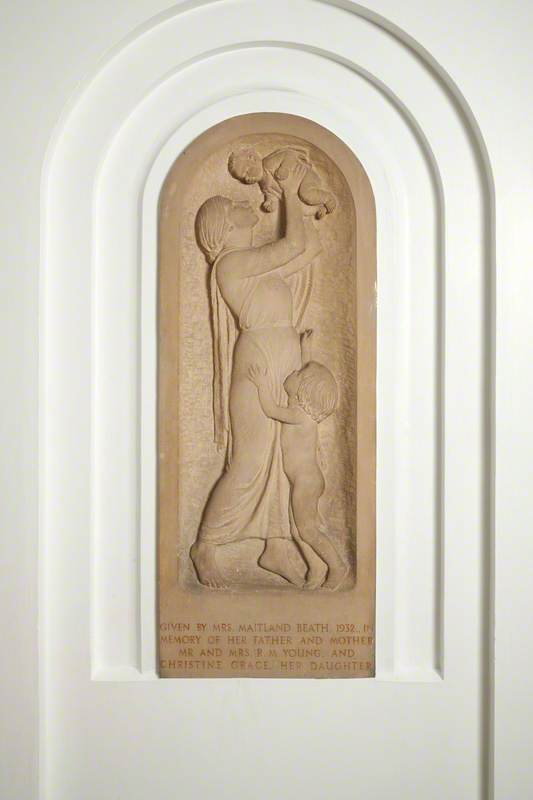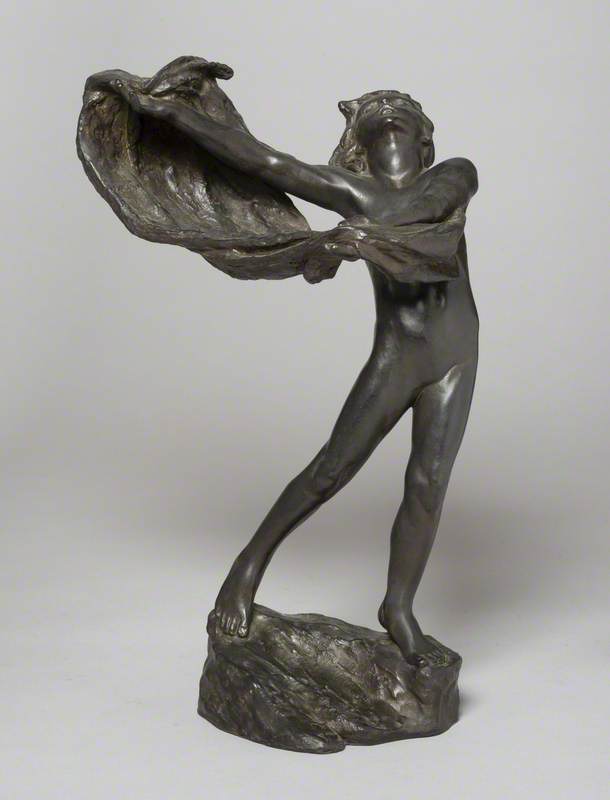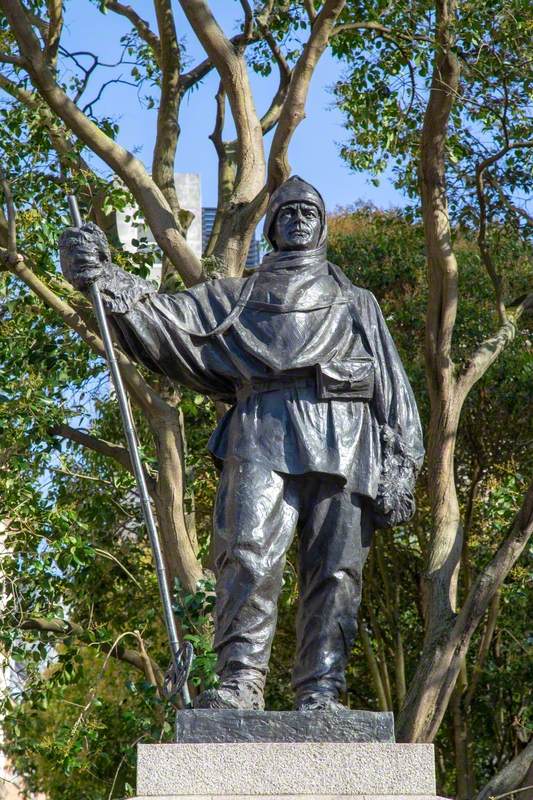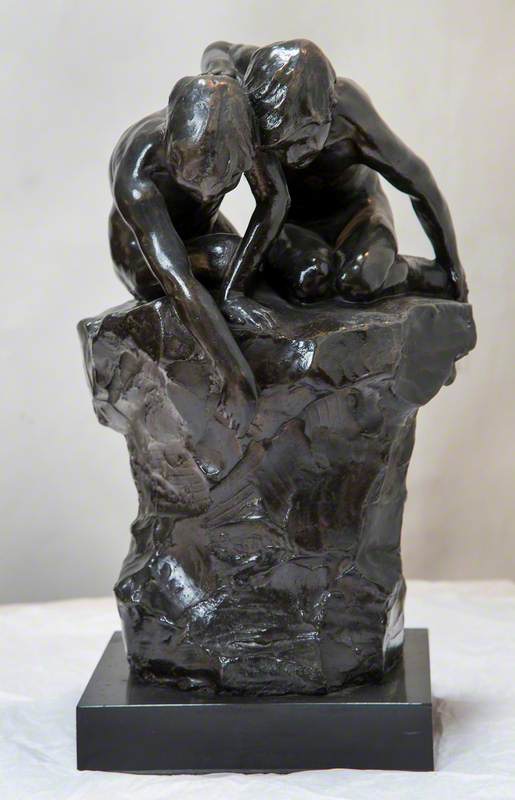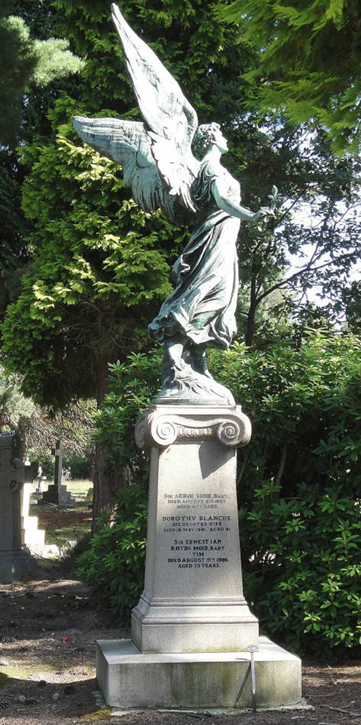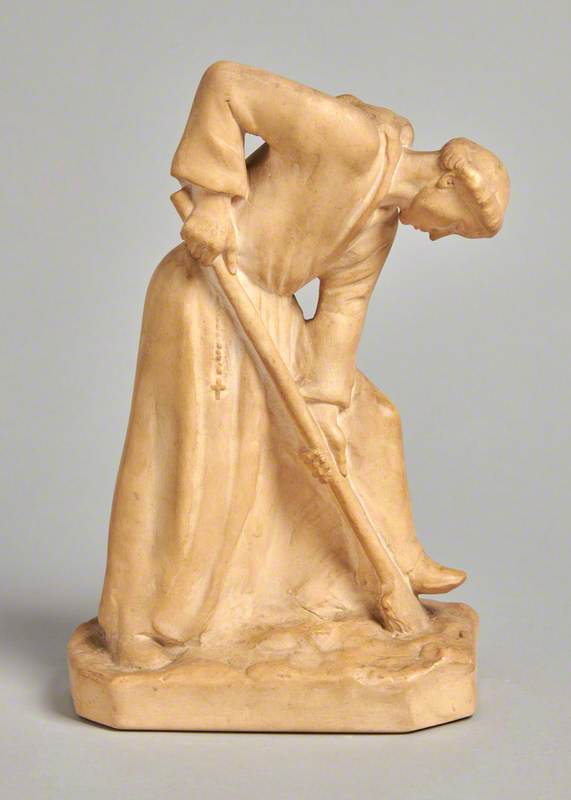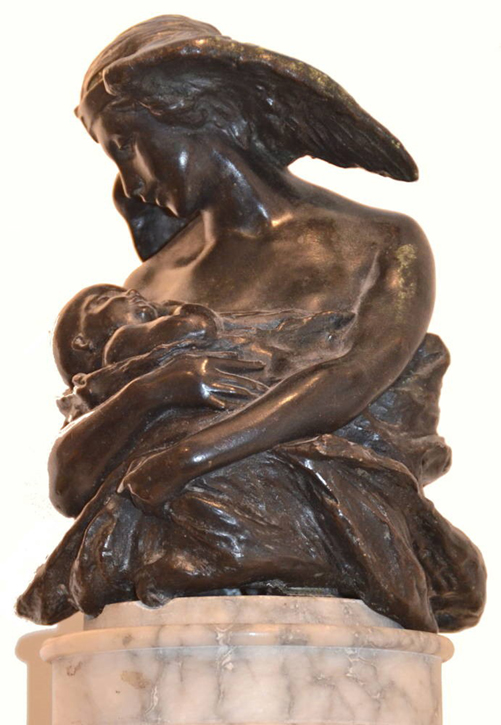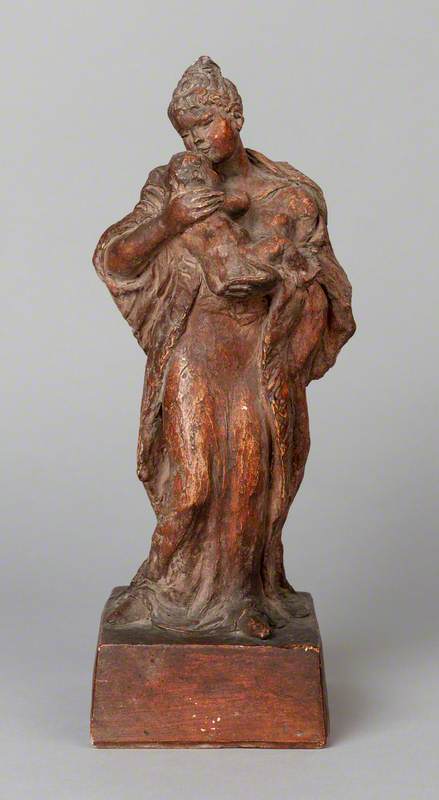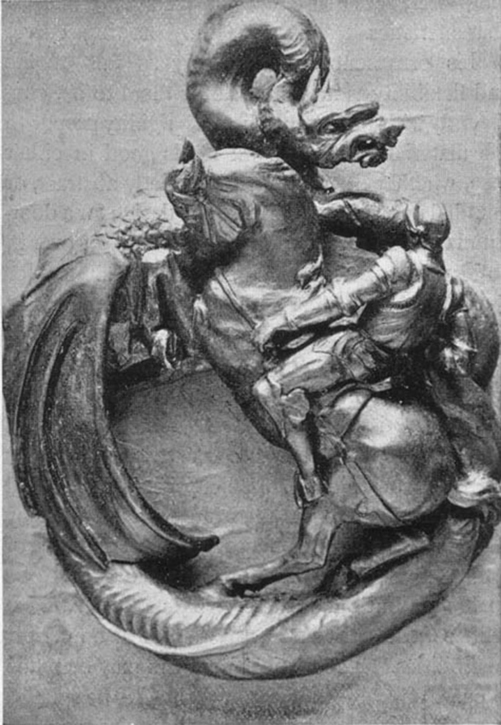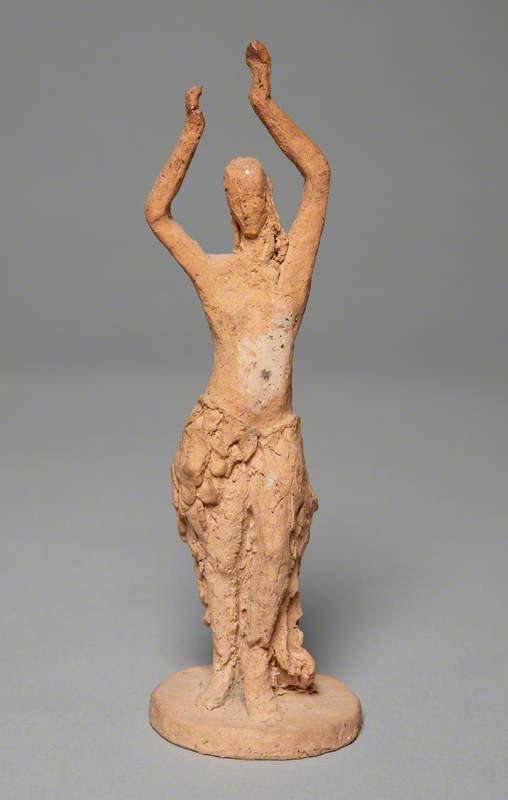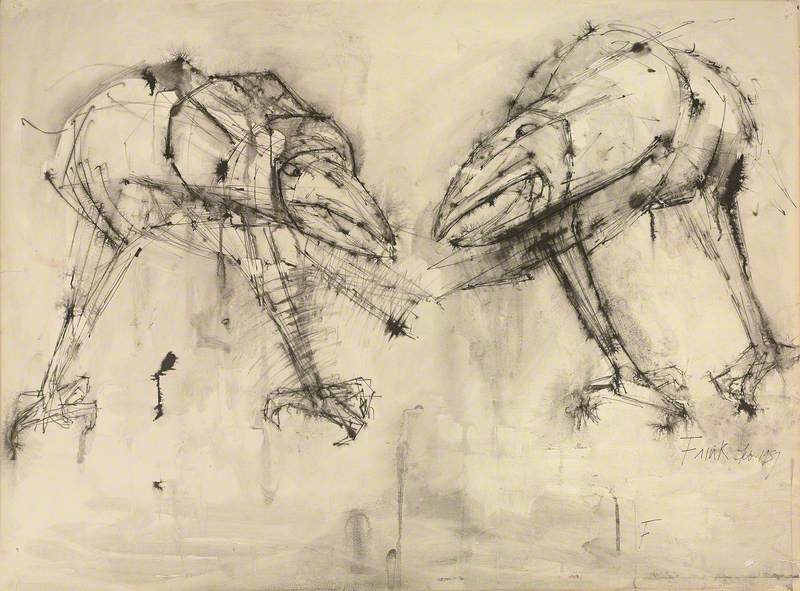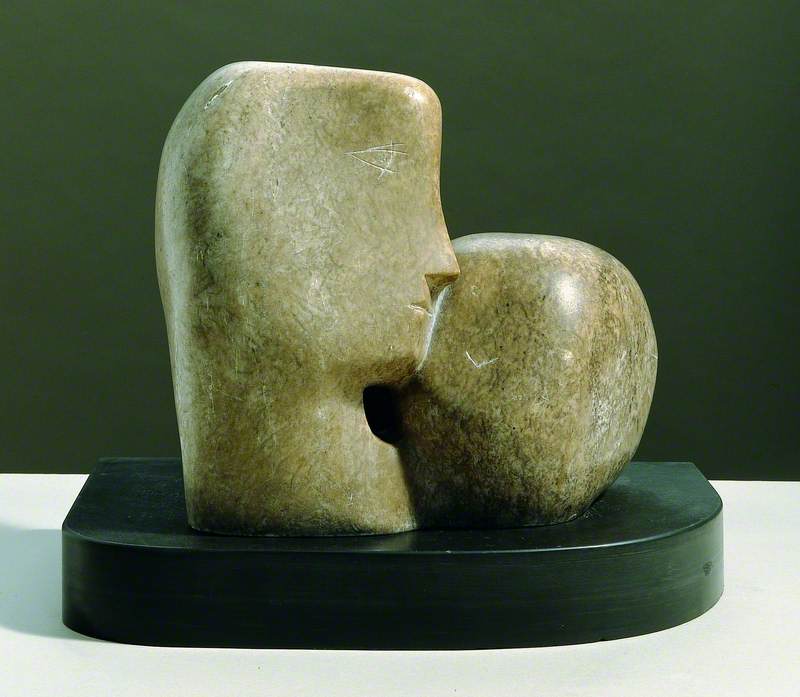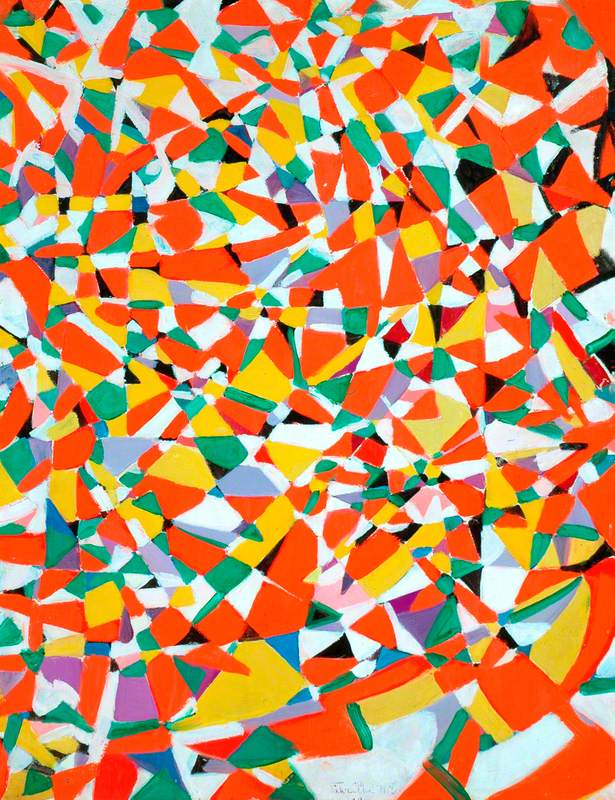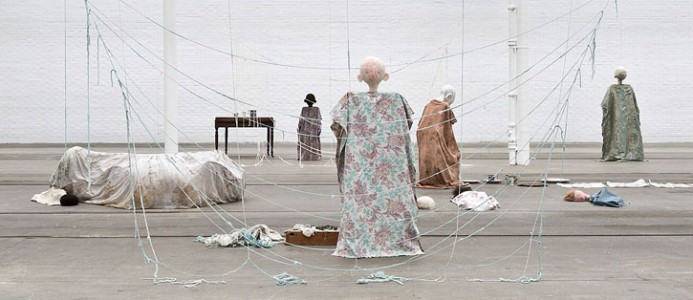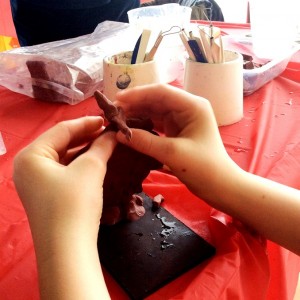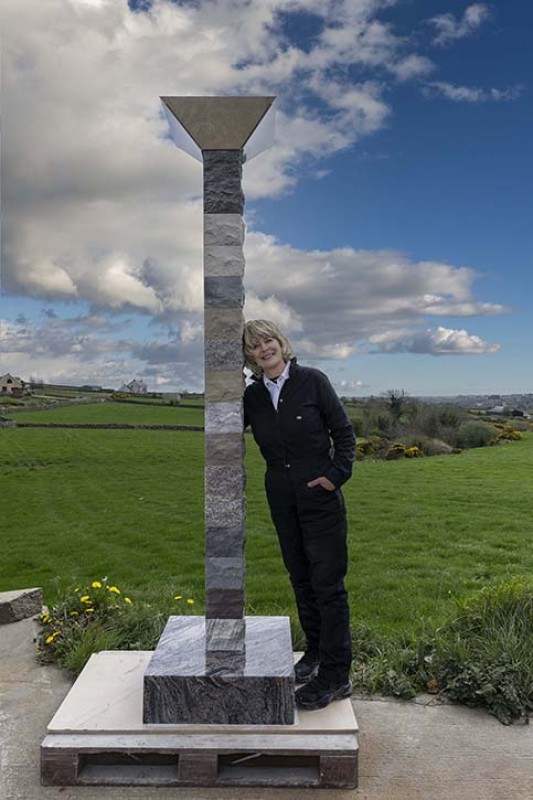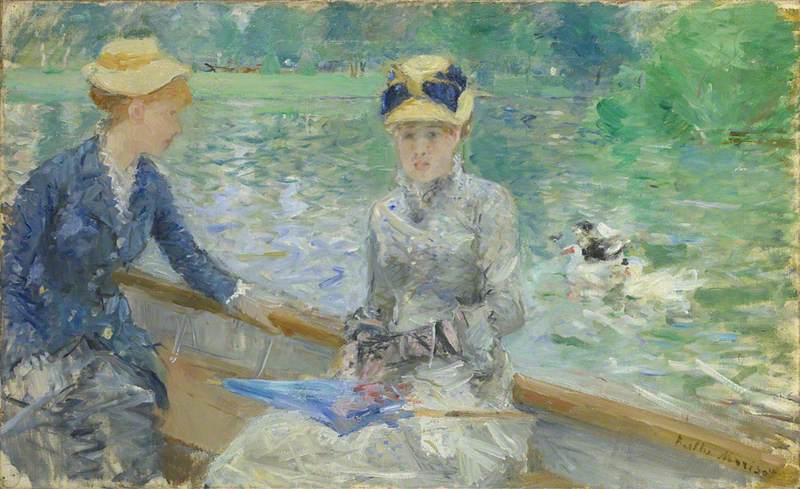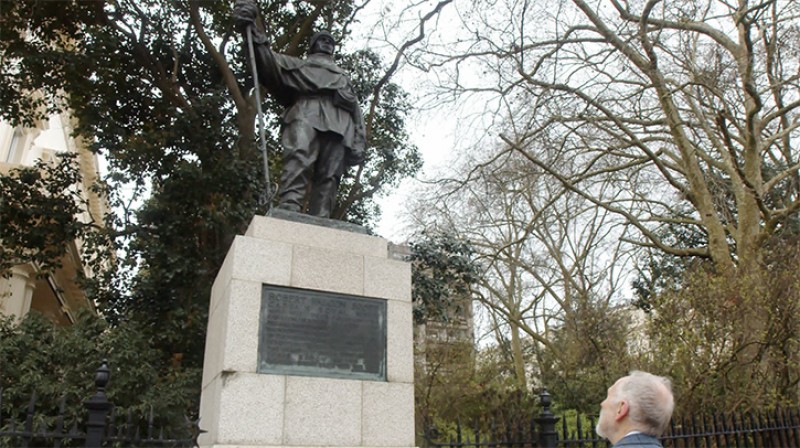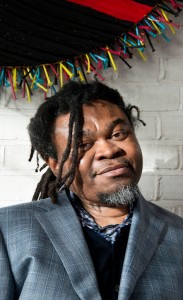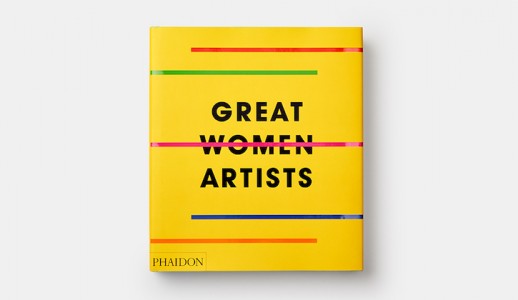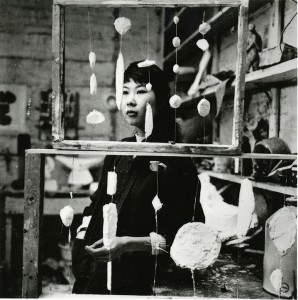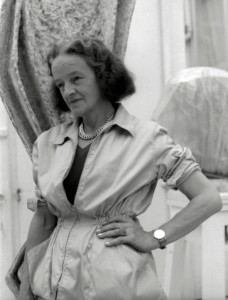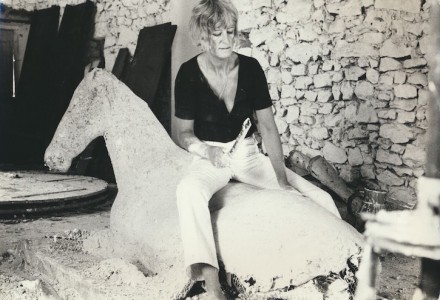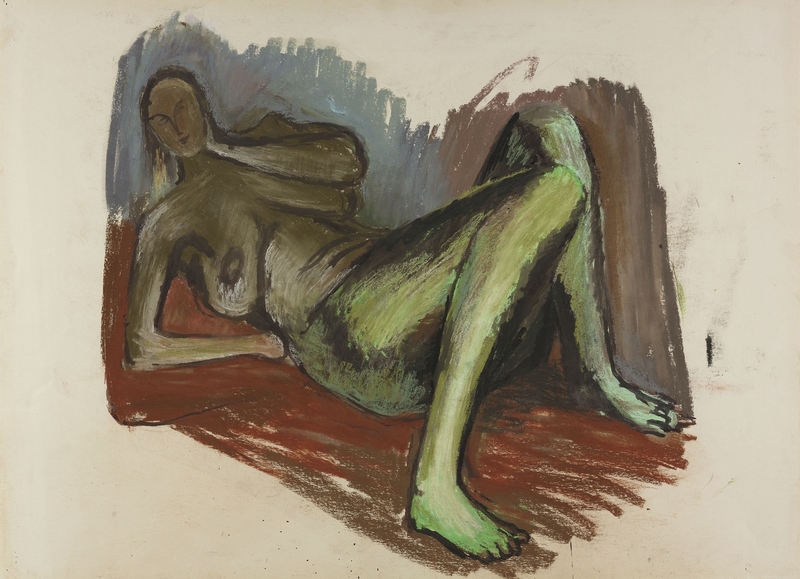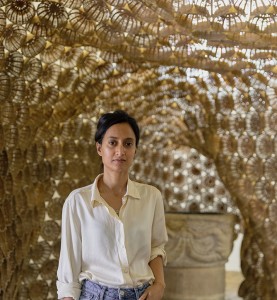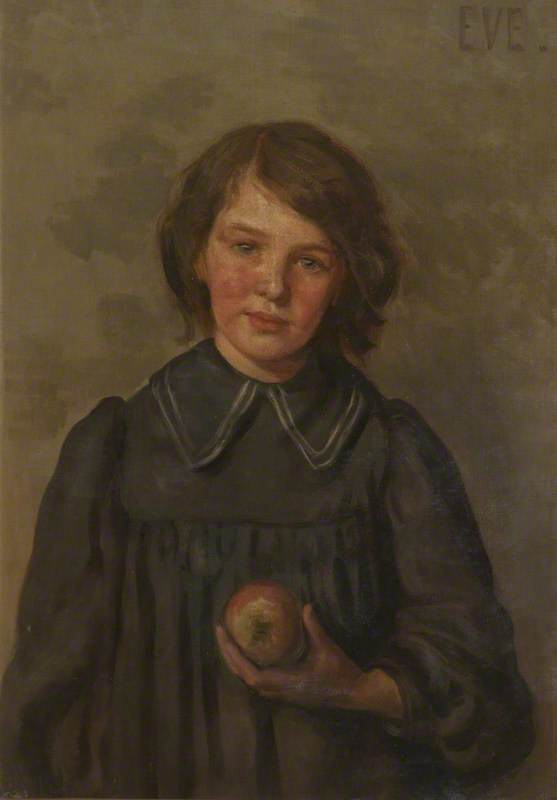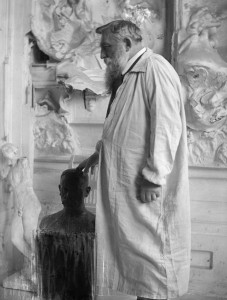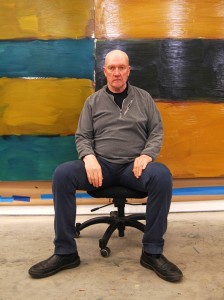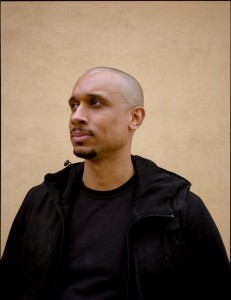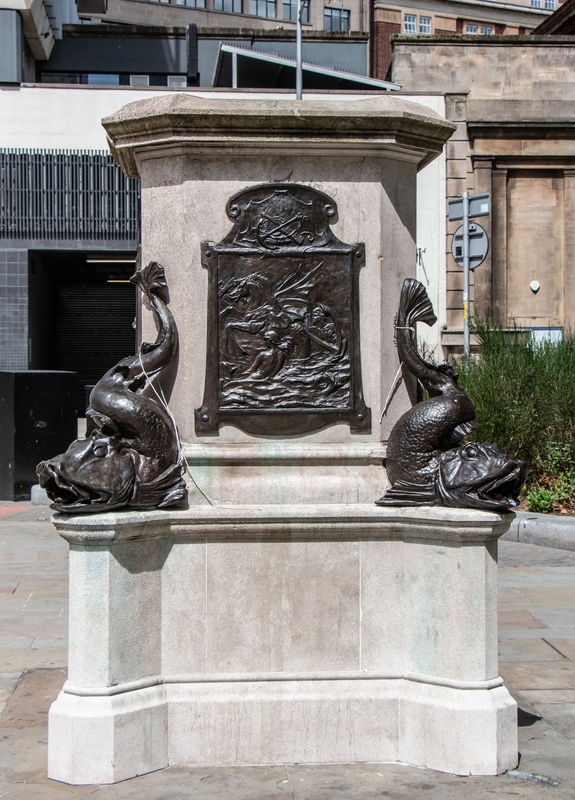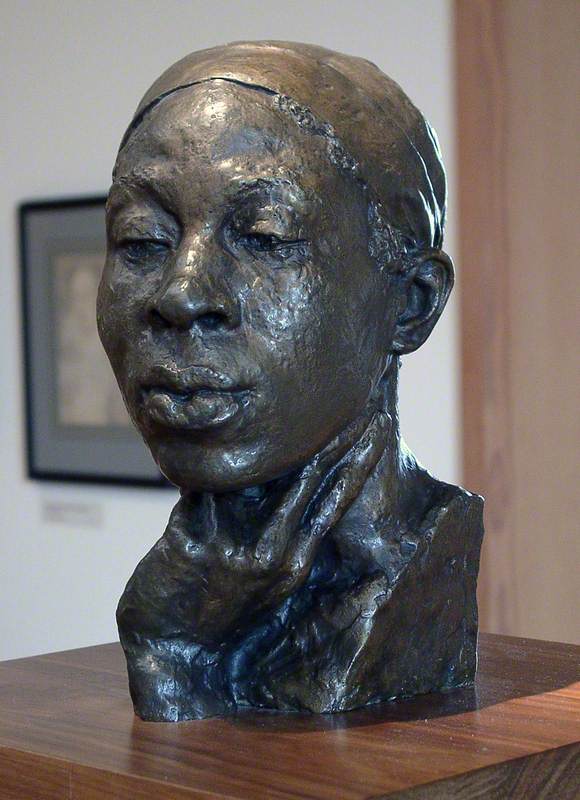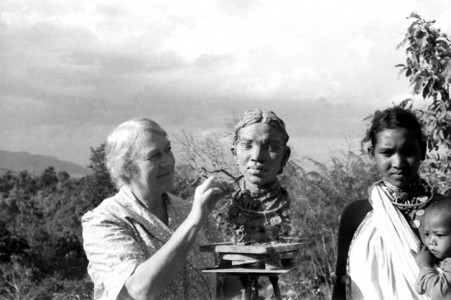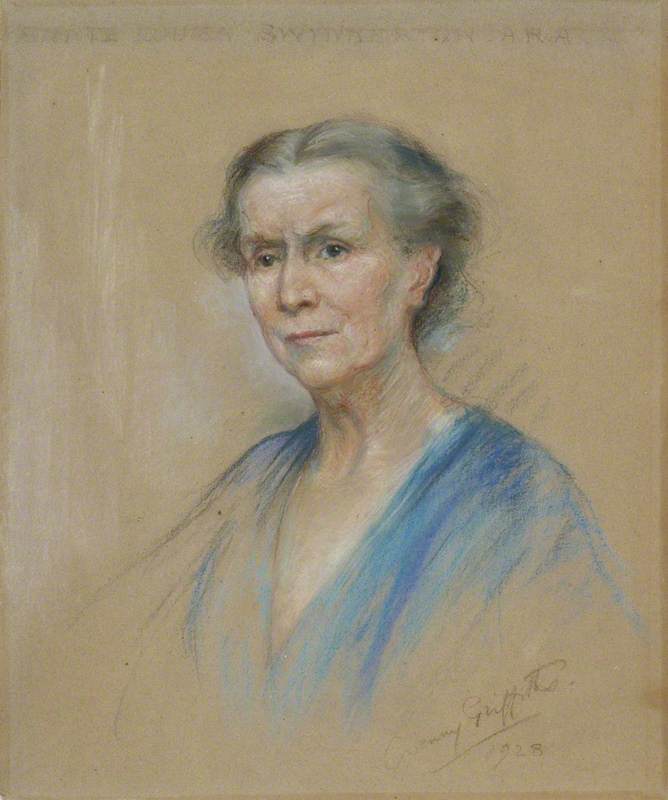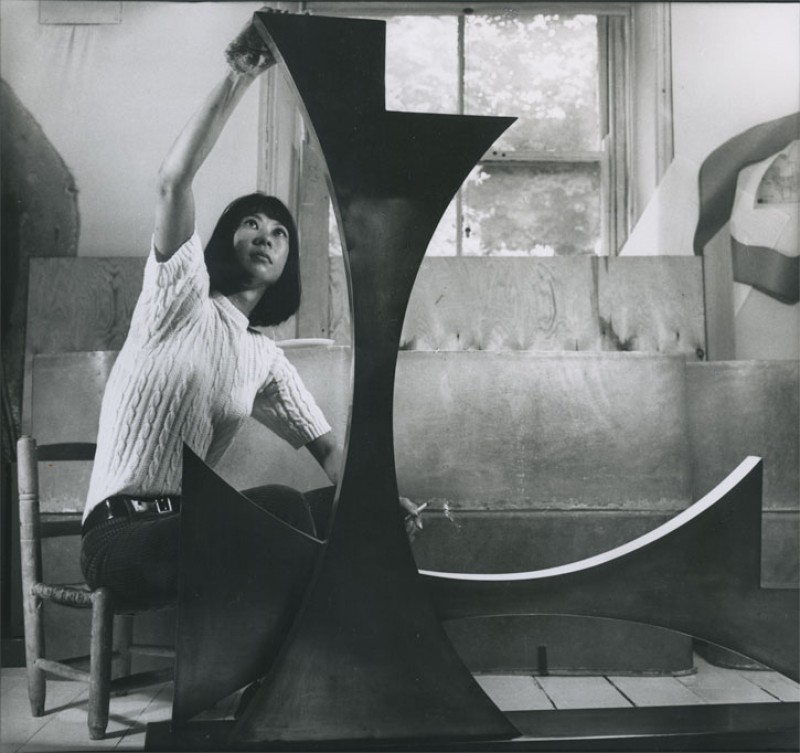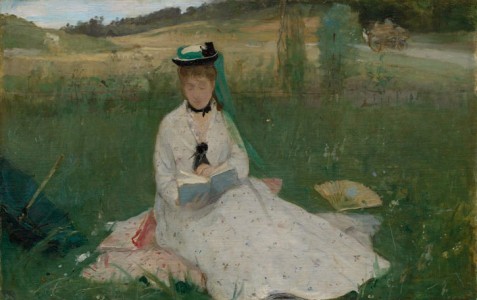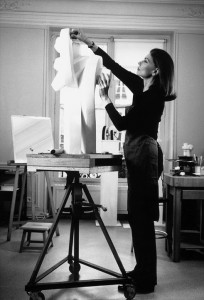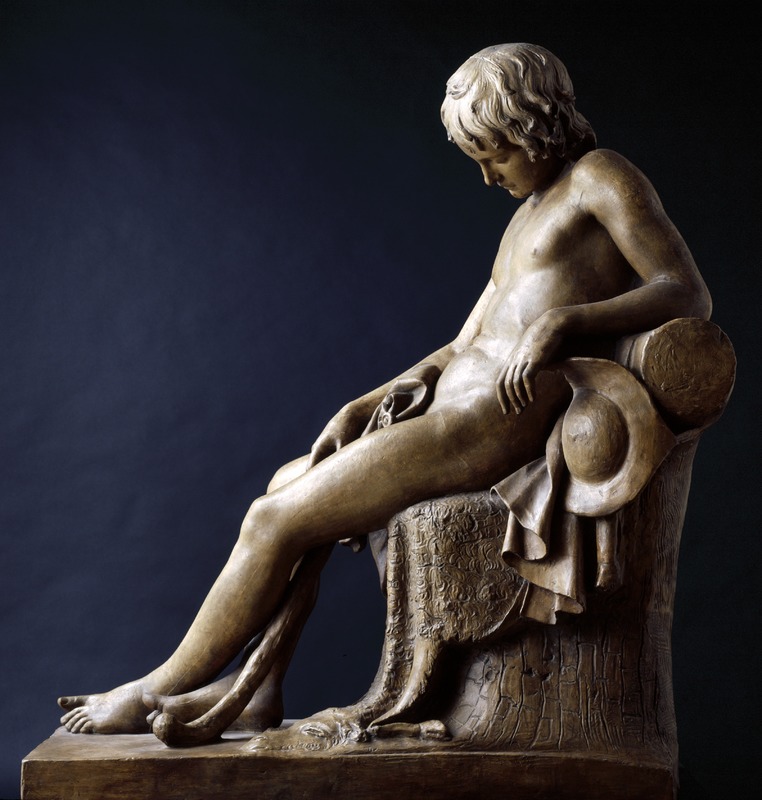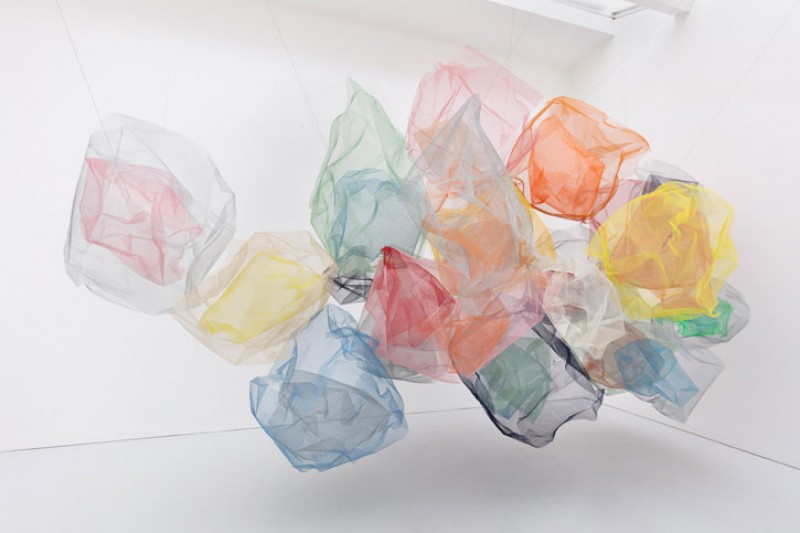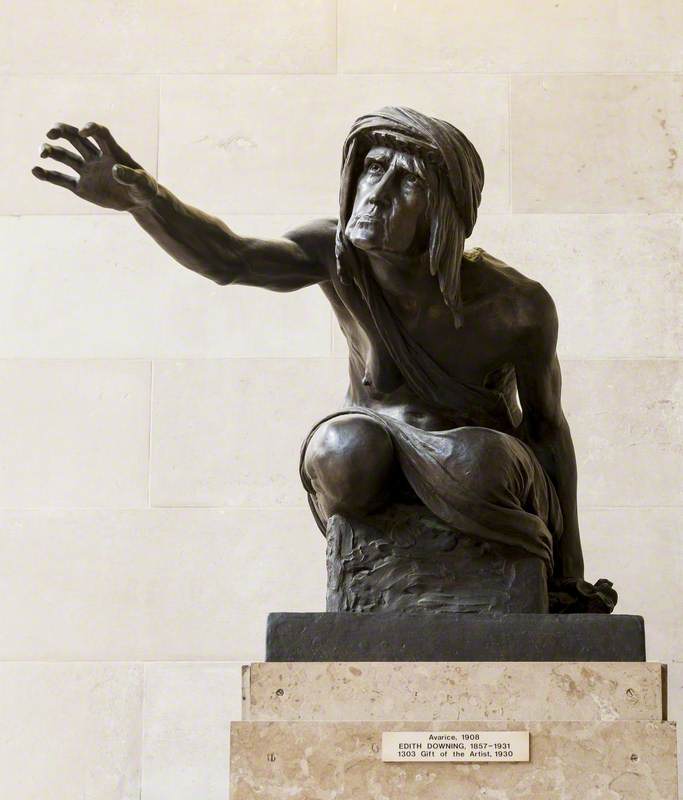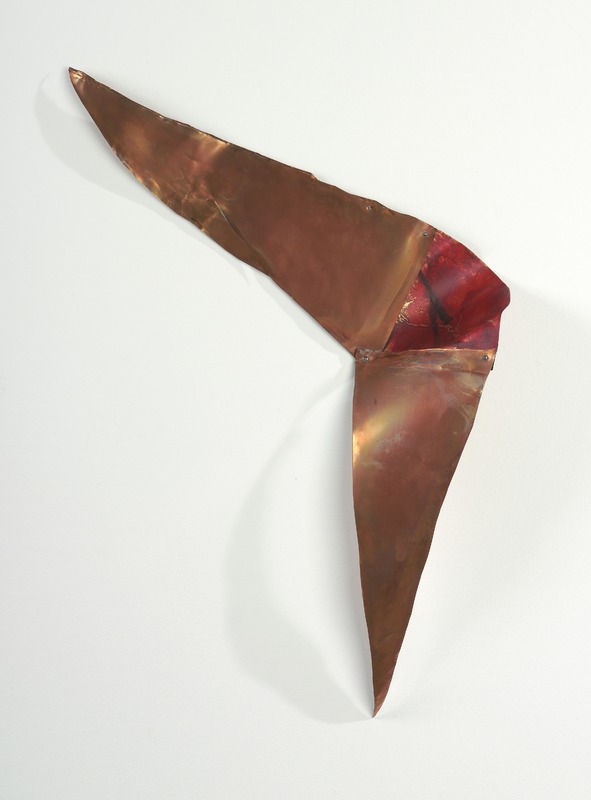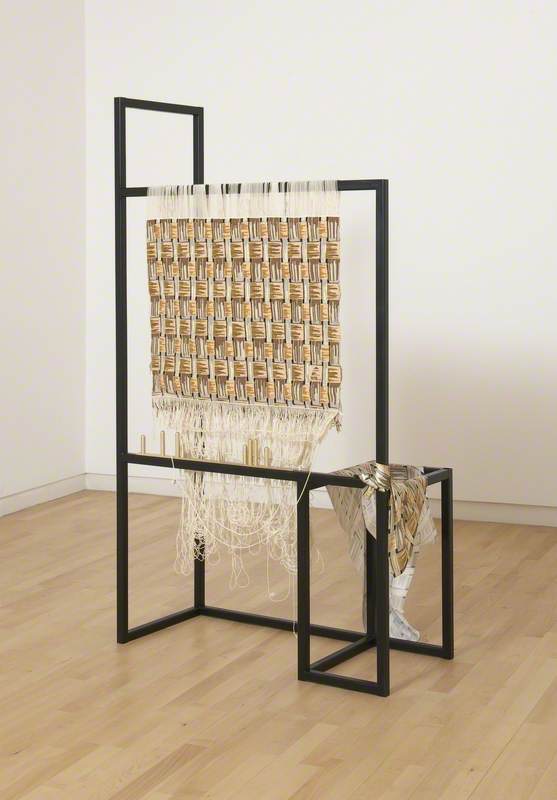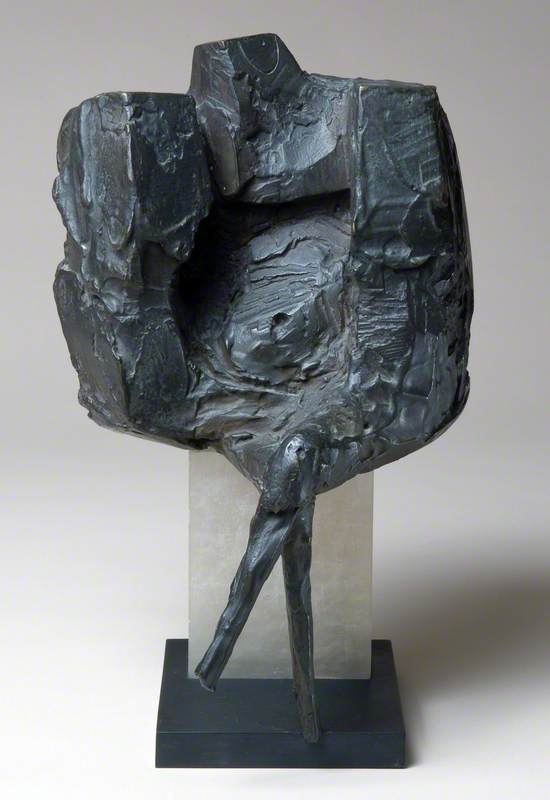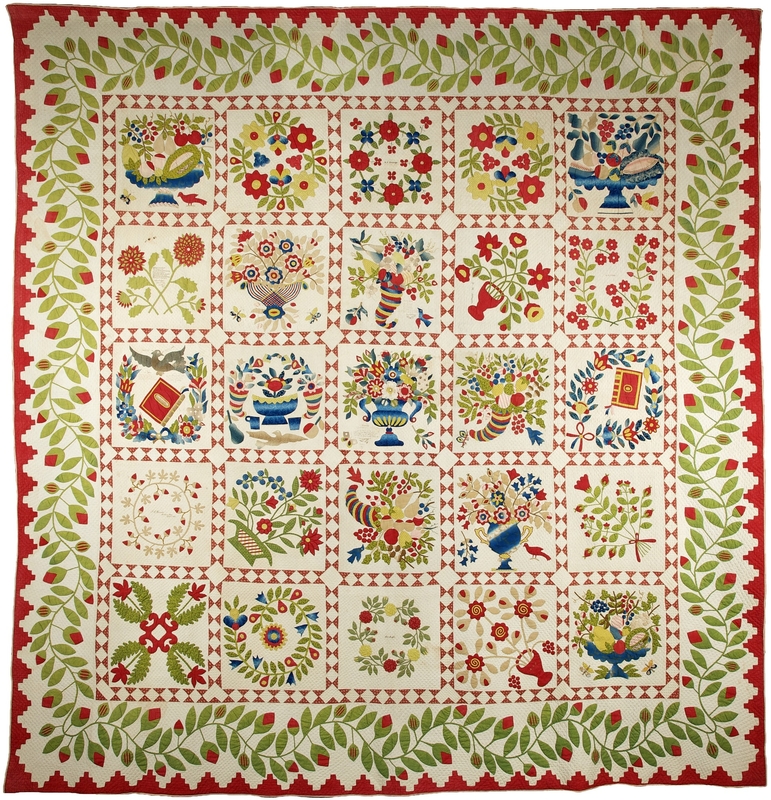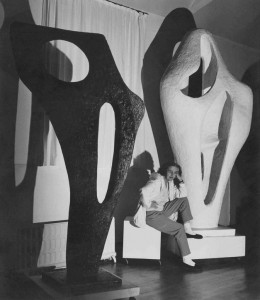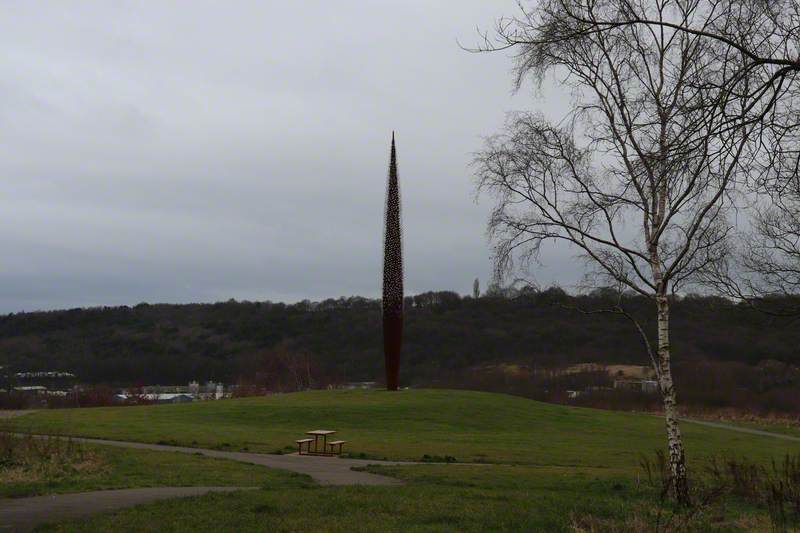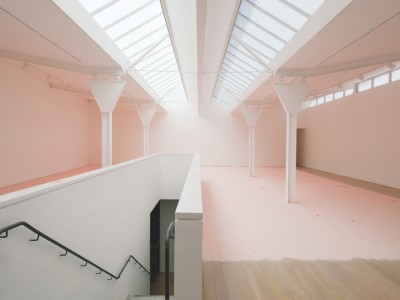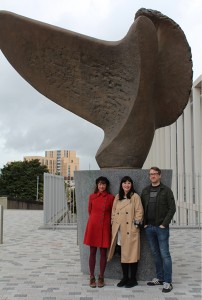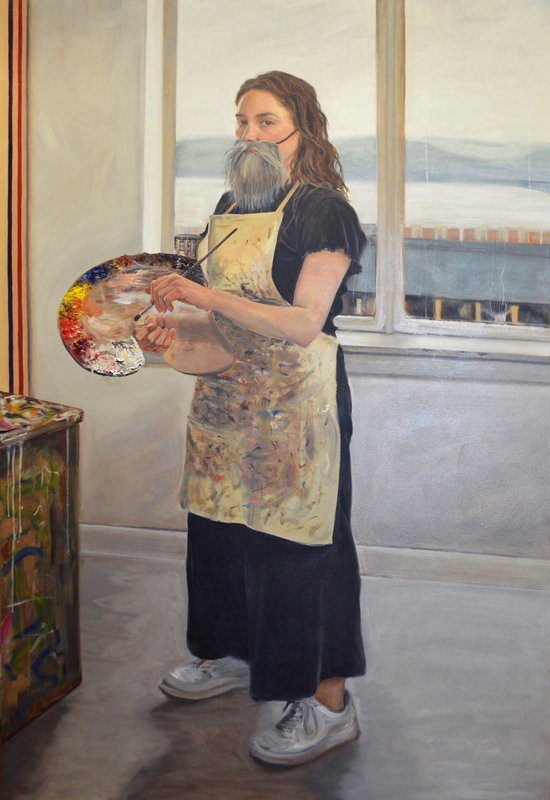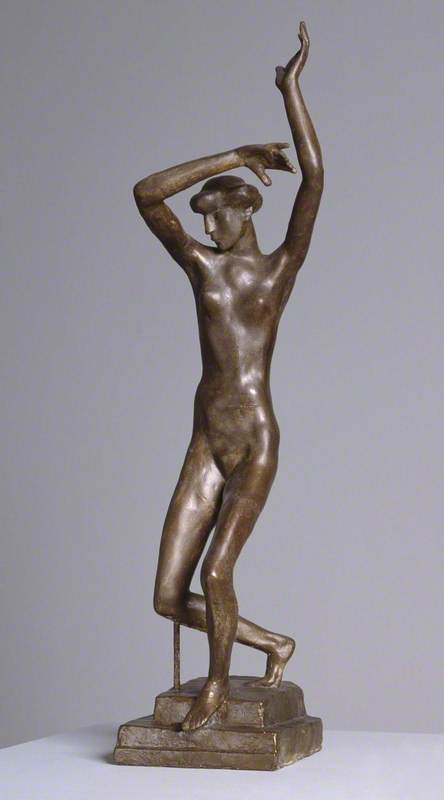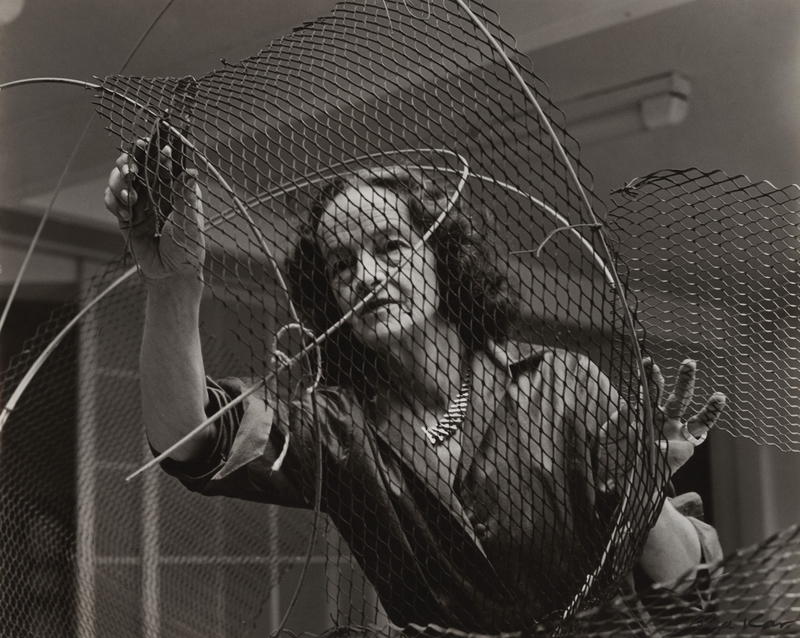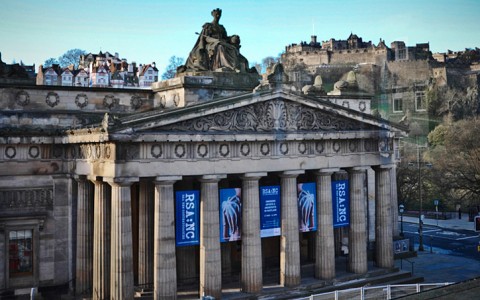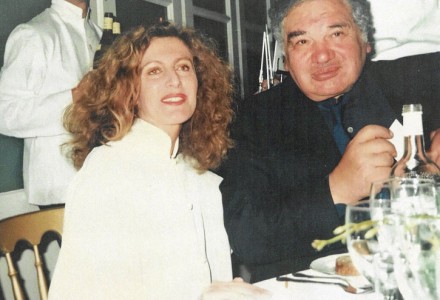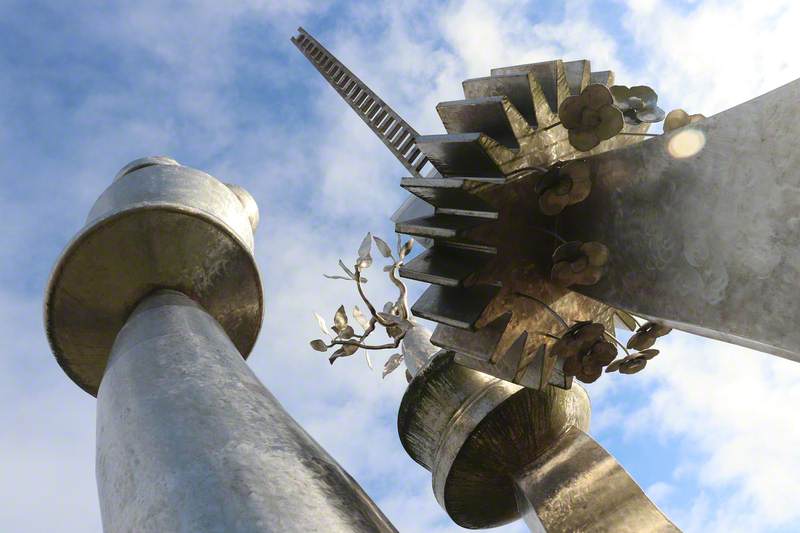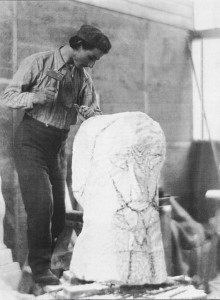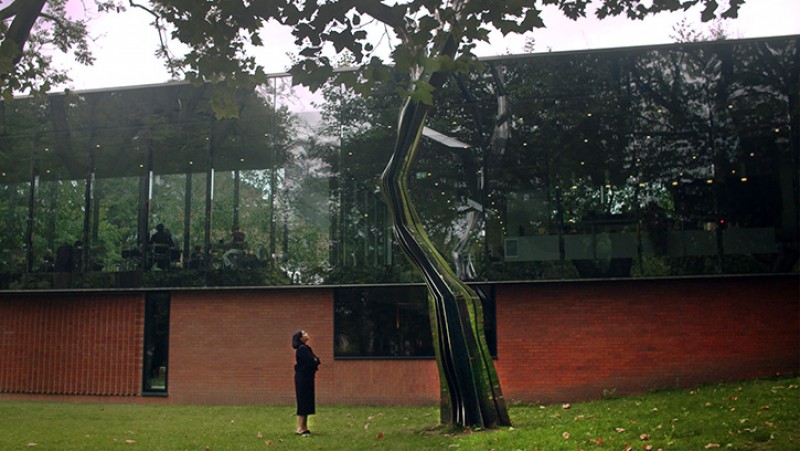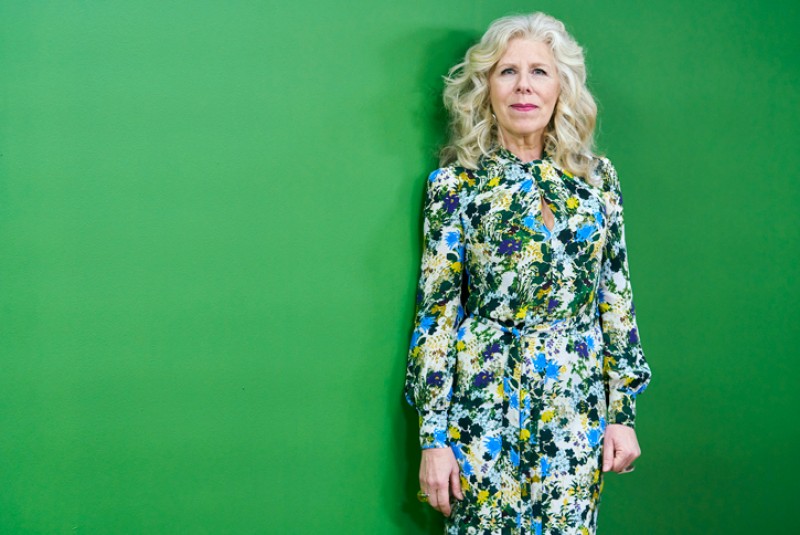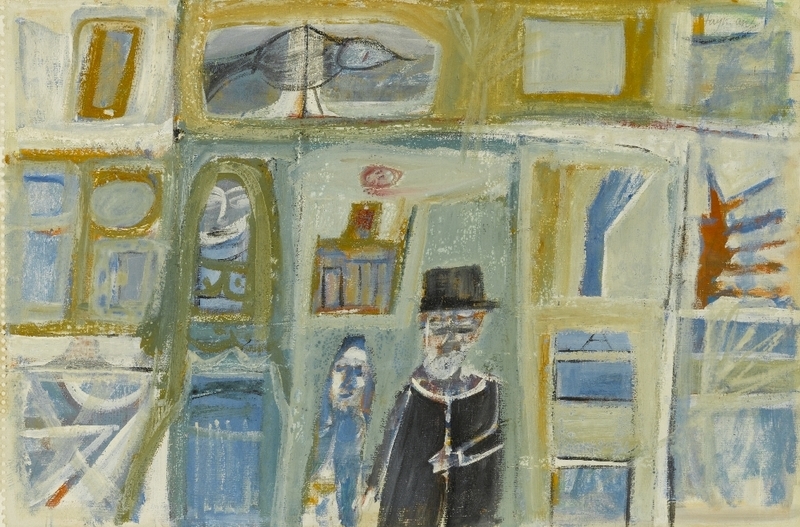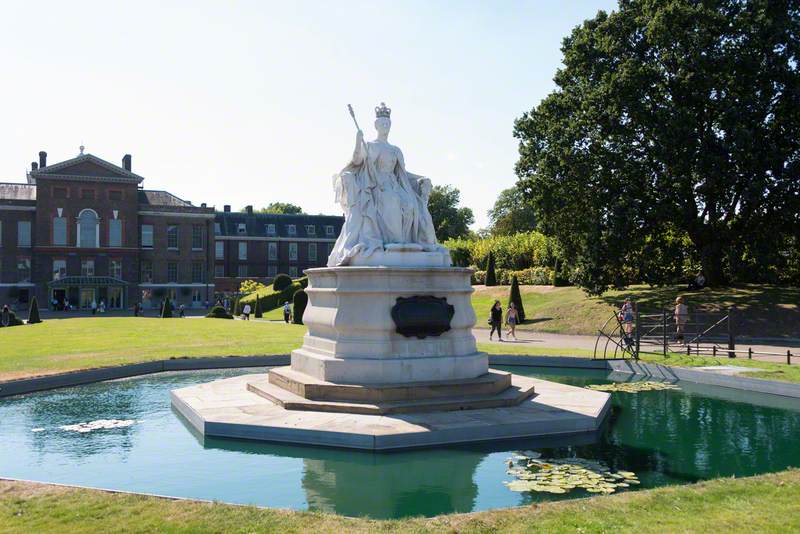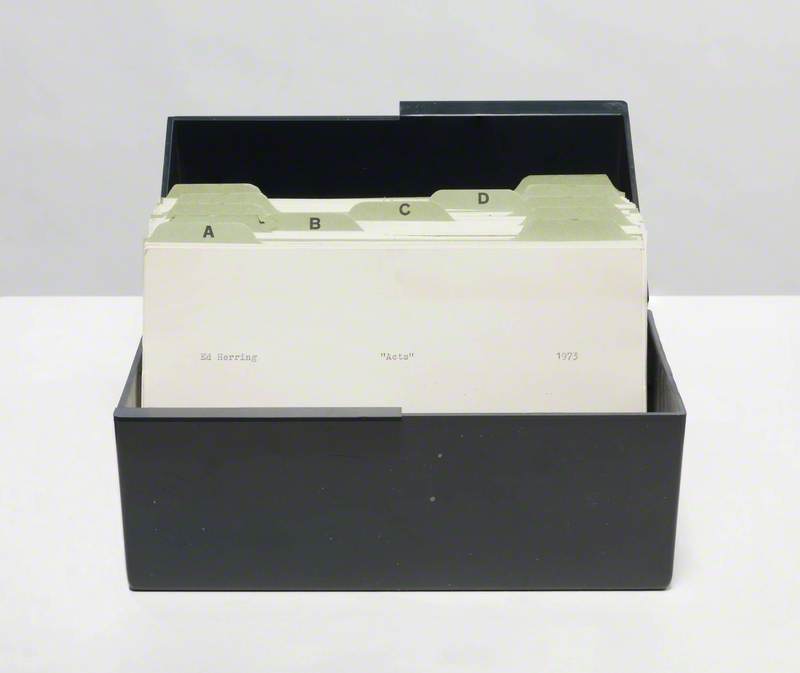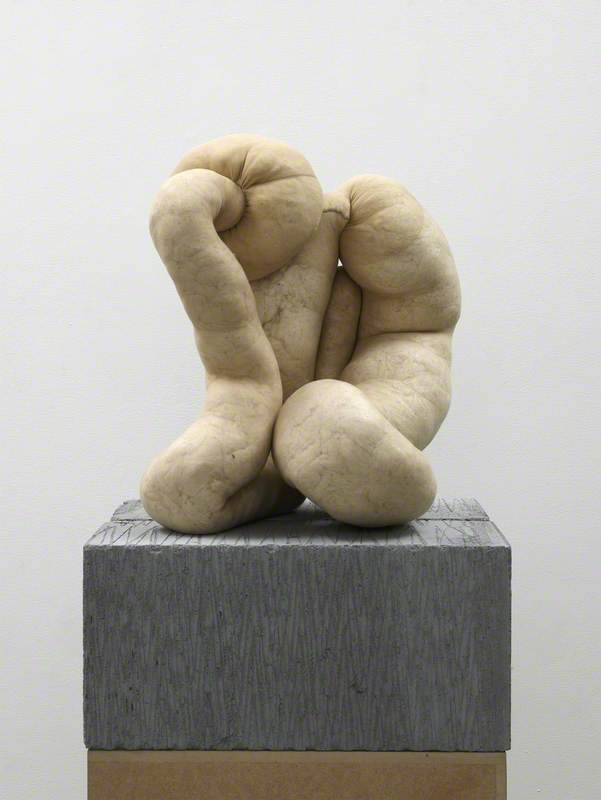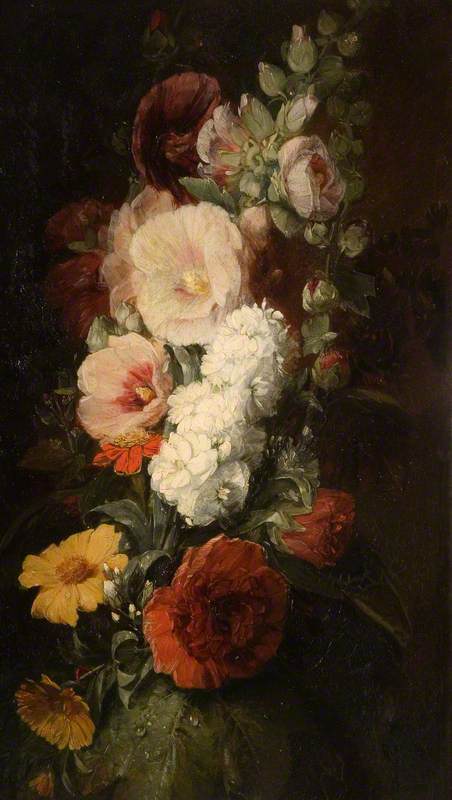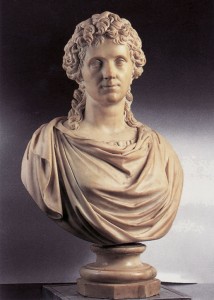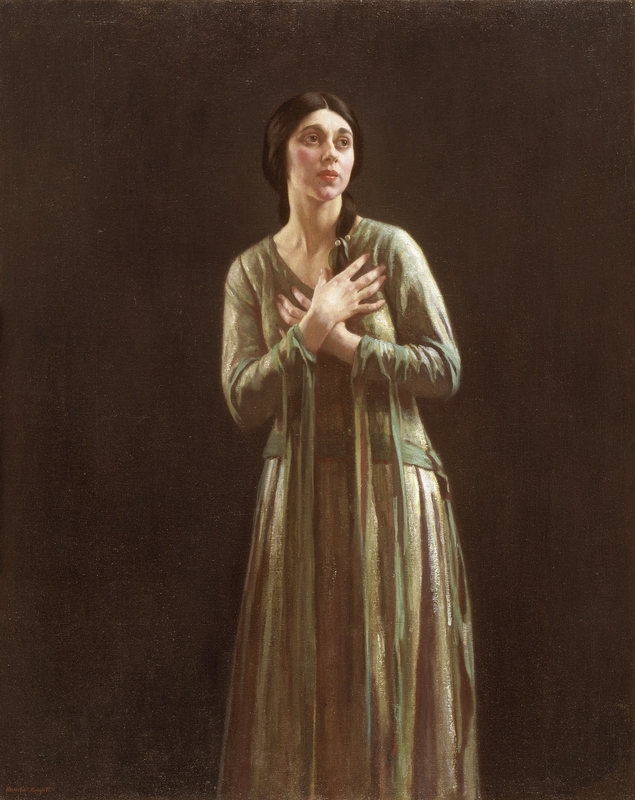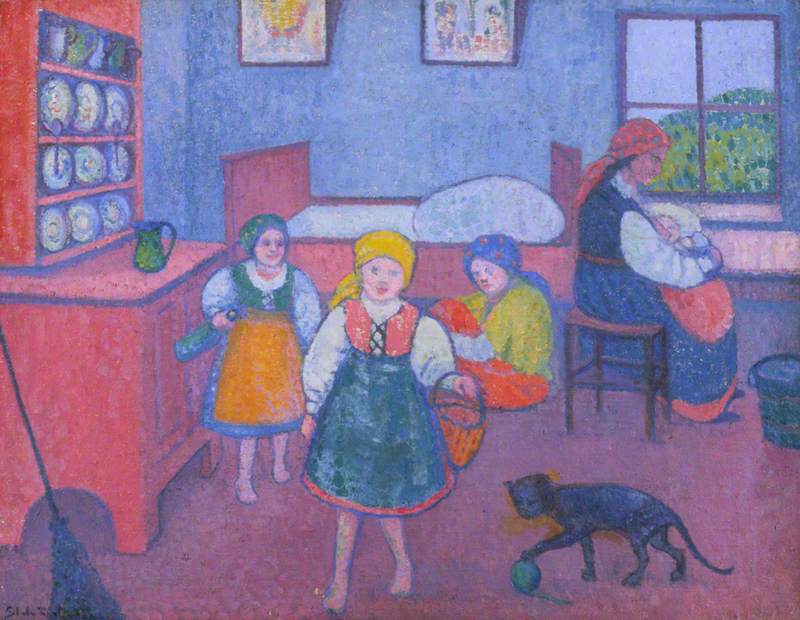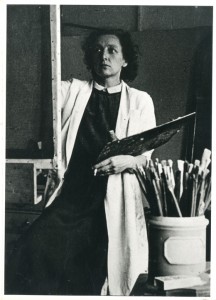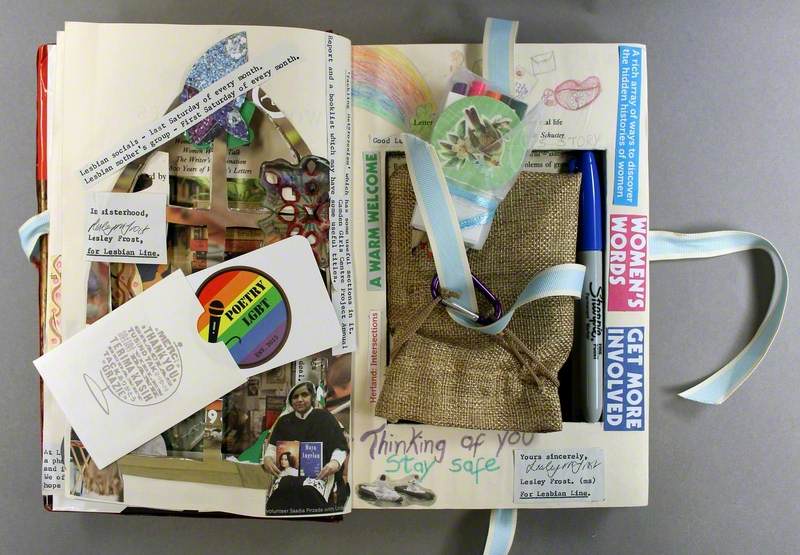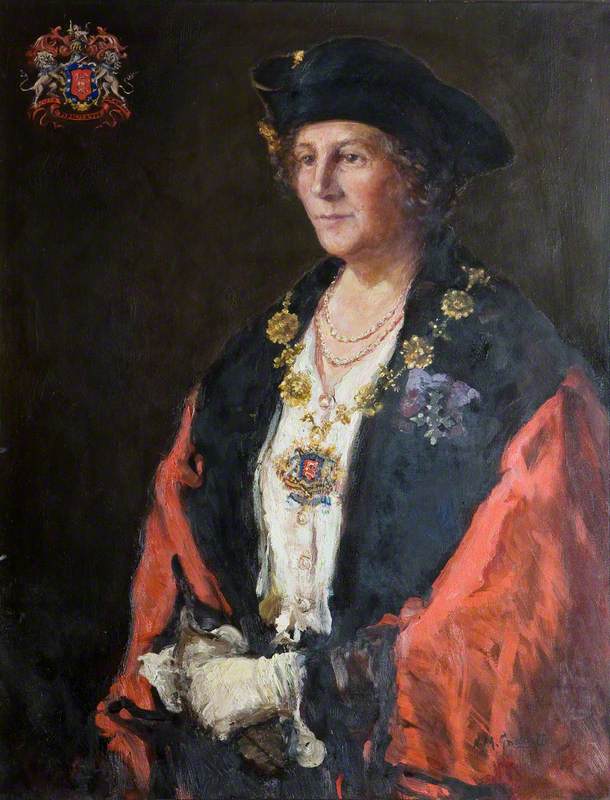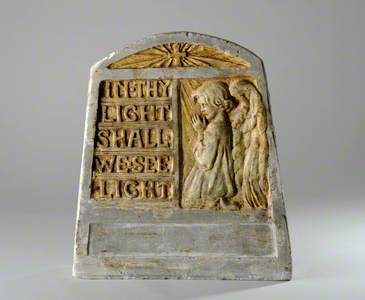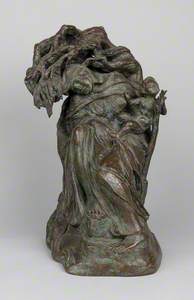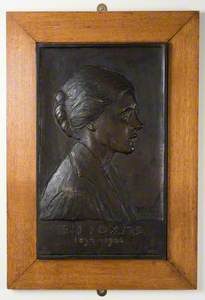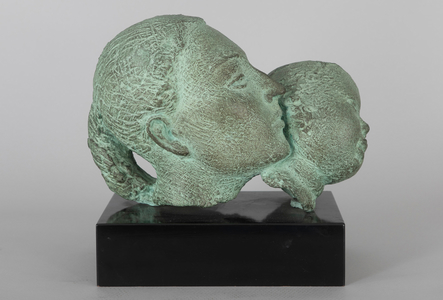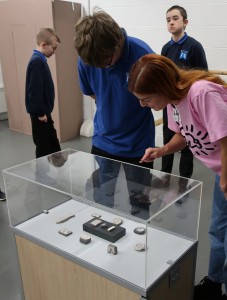In the late nineteenth century, it was widely believed that women could not be sculptors given their supposed preference for colour, and thus for painting. It was also assumed they were at a disadvantage in terms of physical strength. If they did manage to produce sculpture, this was assumed to be derivative since they were believed to be incapable of originality.
A particularly barbed comment appeared in an 1896 interview with George Frampton who was sure that: 'no matter how poetic the idea, how ethereal the finished bas-relief or statue... the art of the sculptor in its noblest form demands strenuous labour so that you may regard it as being tolerably secure from invasion by the new woman, or the mere dilettante; for it is a most perfect instance of fine art inextricably allied with fine craft.'
Apart from such regrettable attitudes, a practical obstacle for women sculptors arose from expectations concerning their gender. They were not usually expected to follow a career, and it was taken as a given that any creative impulses would be fulfilled through marriage and family responsibilities.
Despite these difficulties, a significant number of women were working as professional sculptors. However it was depressingly frequent to see writings that focused on their gender, resulting in trivialising descriptions of incidental domestic and anecdotal issues that would rarely be the case in writings on their male colleagues.
Study for Mason (Purbeck Quarry Man)
c.2000
Mary Spencer Watson (1913–2006) 
We might suppose that such times have passed. However in a 1988 BBC Radio Solent broadcast with Mary Spencer Watson (1913–2006) the interviewer described how he could see in his mind a vision of a 'petite 12-year-old girl working away with massive tools on a great block of stone', referring to Spencer Watson's early encounters with stone carving in Dorset's Purbeck quarries.
Mary Spencer Watson in her studio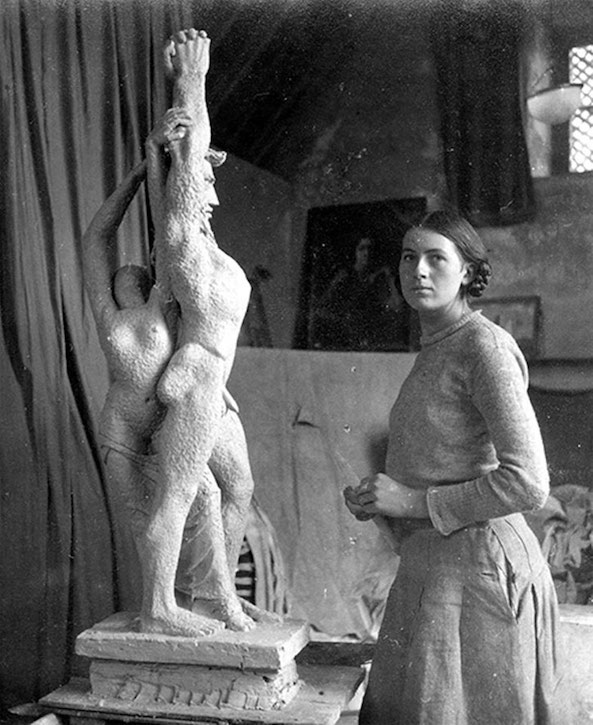
The continuing novelty of the female sculptor ran through numerous articles, one example from 1922 in The Sketch announcing that Kathleen Scott was to remarry after the death of her first husband Antarctic explorer Robert Falcon Scott in 1912. Her second husband was politician Edward Hilton Young, who was created Baron Kennet in 1935, and who extended her network of influential individuals in the political and artistic spheres.
'The Sculptor Widow of an Antarctic Explorer to Marry'
published in 'The Sketch', 1st February 1922 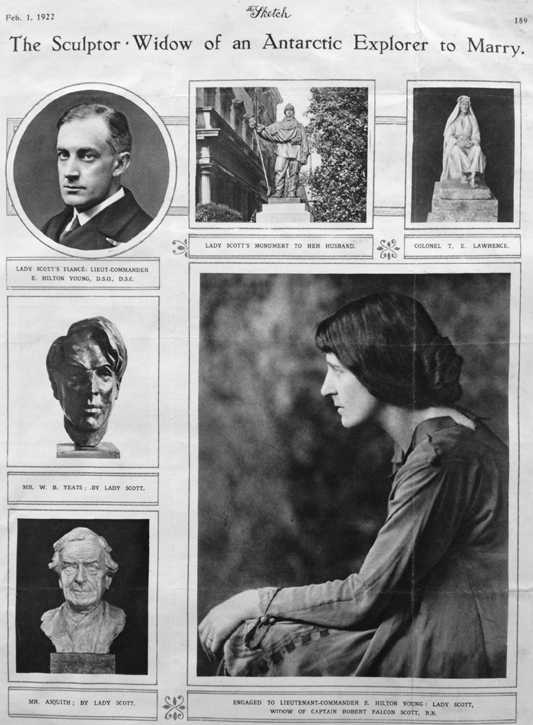
In the page from The Sketch, Scott is shown surrounded by her sculptures of prominent male sitters, in the centre of which is a portrait of her fiancé. Scott's social status would continue to preoccupy reviewers.
Despite the quantity and range of accounts which had little to say about women sculptors' work, they were part of the expansion of sculpture in the late nineteenth century onwards. The emergence of the so-called 'New Sculpture' saw a shift in style towards an emphasis on movement and realism, departing from classical precedents. This development also led to a questioning of the boundaries between 'fine' and 'decorative' art.
One of the most notable results was the emergence of the statuette, which was promoted as an affordable way for the middle classes to demonstrate their taste in creating fashionable homes.
For women sculptors, the statuette afforded a great opportunity to produce small-scale work, and their work in this area does seem particularly distinctive. Statuettes made by male sculptors were often reduced versions of a monumental figure, whereas those made by women were mostly conceived to scale from the outset.
Wrestling Boys
1897, plaster statuette by Ruby Levick (c.1872–1940) 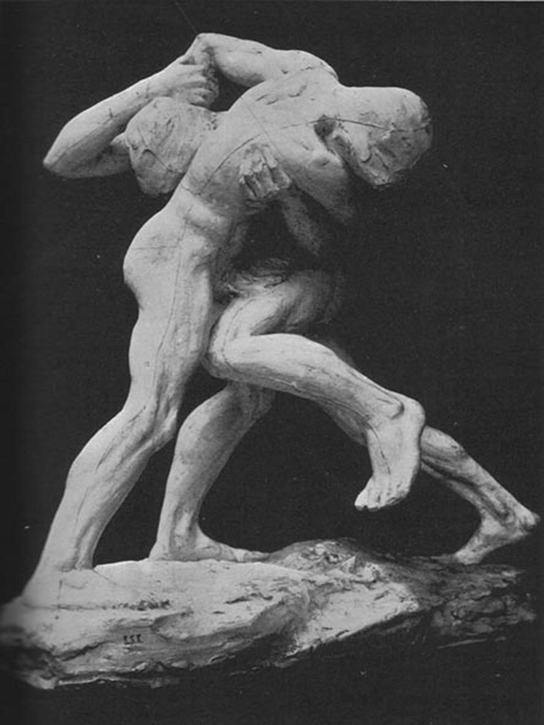
This sculpture by Ruby Levick has been likened to Frederick Leighton's influential Athlete Wrestling with a Python (1877), also reproduced as a statuette.
The intertwining of the limbs in the Levick work encourages the viewer to look at the sculpture from a variety of viewpoints, and thus to move in closer. Levick's studies of male athletes were particularly admired, such as the bronze statuettes Boys Fishing and Fishermen Hauling in a Net.
Fishermen Hauling in a Net
1900, plaster statuette by Ruby Levick (c.1872–1940) 
Margaret Giles' statuette Hero (1901) moves away from conventional representations of the female nude as passive.
Hero
1901, bronze sculpture by Margaret Giles (1868–1949), private collection 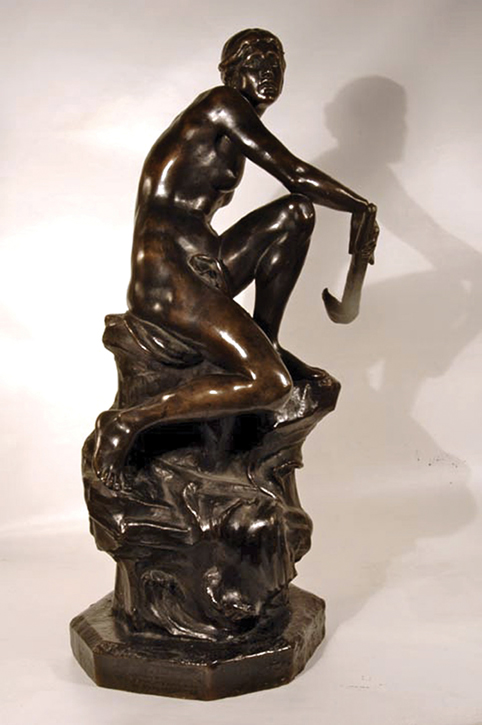
Indeed, there are some resemblances to a Michelangelo figure in the strength of the figure, but at the same time, the work rejects classical features of stillness and balance.
Lilian Maud Wade's statuette Victory, shown at the Royal Academy in 1907, was possibly a maquette for a significant memorial.
Victory
c.1907, bronze sculpture by Lilian Maud Wade (1870–1923) 
Another of her winged figures can be seen on this funerary monument to 2nd Lieutenant Rex Moir (1898–1916) and his father Sir Ernest William Moir (1862–1933) in Brookwood Cemetery, Woking.
Rosamund Praeger (1867–1954) was active in the Northern Ireland art scene. A particularly beautiful work is her statuette of the Irish-born Saint Fiachra.
The statuette form was also ideal for conveying a sense of intimacy in mother and child subjects, and somehow their small format allowed for the possibility that such works might be viewed as both secular and religious.
Lucy Gwendolen Williams' bronze Queen of Dreams is a particularly successful work.
A much later work by Elsie March (1884–1974) shows the longevity of this subject and small format, dating from 1950.
Apart from working with the statuette as a high-quality artistic artefact for the domestic interior, many female sculptors also worked within the area of applied art. These included Florence Steele (1857–1948) who also produced civic regalia as in her 1912 trophy, in a format like a miniature memorial.
Trophy for Buffs, in Memory of the South African War
1912, metalwork by Florence Steele (1857–1948) 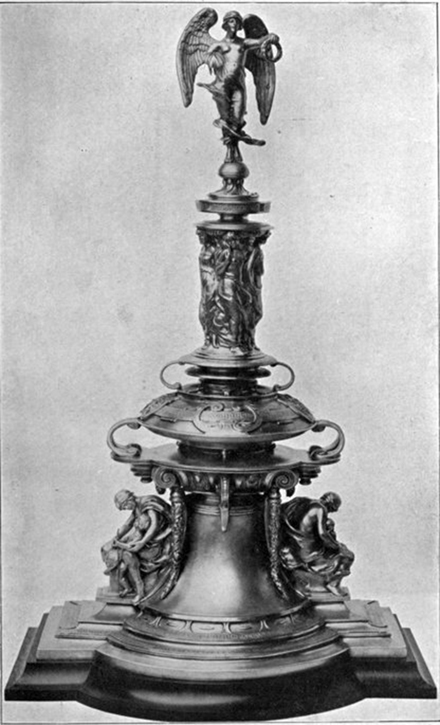
Adèle Hay (active 1897–1904) produced an exquisite bronze door knocker.
Many of these women produced pieces that harnessed the statuette with a functional object such as an electric lamp. A particularly graceful example was made by Esther Mary Moore (1857–1934) in 1900.
Electric Lamp
1900, bronze by Esther Mary Moore (1857–1934) 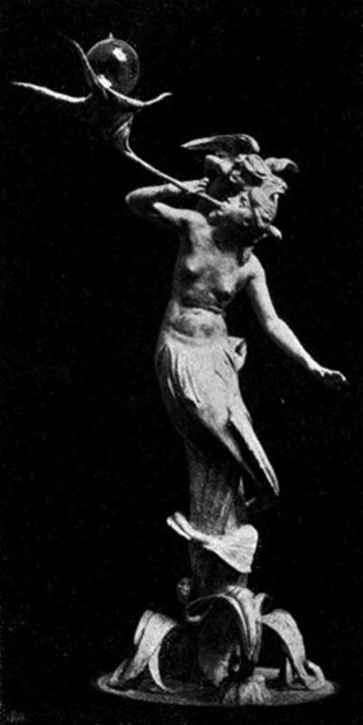
At the other end of the sculptural scale, many women sculptors produced highly successful monuments. These were by no means the sole province of male practitioners.
Ellen Mary Rope (1855–1934) often worked in the format of low plaster reliefs, many of them personal memorials.
One impressive example was a composition that depicted an angel sounding the last trump which Rope reworked on at least three occasions. The initial commission in 1890 was for a memorial to Mrs Mary Anne Moberly, wife of George Moberly, Bishop of Salisbury Cathedral.
The Angel of the Resurrection
c.1902, marble by Ellen Mary Rope (1855–1934), Salisbury Cathedral 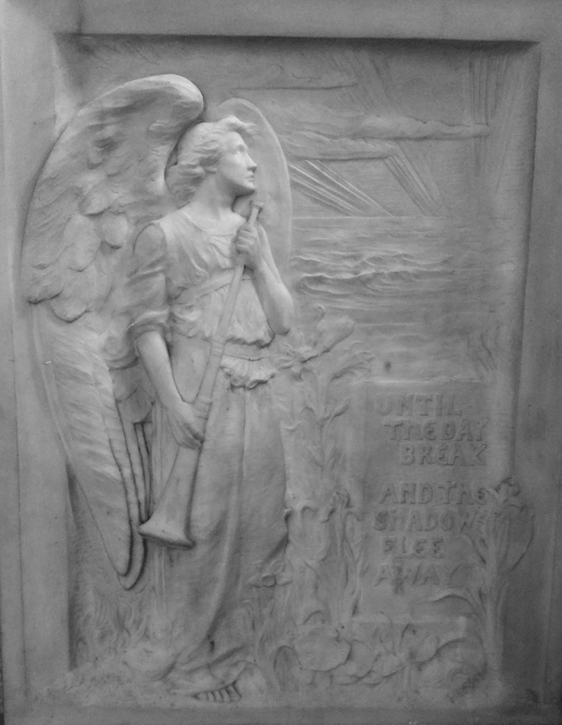
Given its shallow relief, the illusion of depth is impressive. Depressingly, such is the fate of much sculpture made by women, that in order to photograph this work in Salisbury Cathedral I had to arrange for a cupboard that was placed in front of it to be moved aside.
Frances Bessie Burlison's impressive Beaumont College war memorial was unveiled in 1921.
The memorial comprises a Portland stone arch framing a life-size sculpture of Christ crucified, beneath which are the names of the dead, the whole mounted above an altar, symbolic of sacrifice. Burlison sculpted the bronze figure and the arch was designed by Giles Gilbert Scott and Adrian Gilbert Scott.
Mary Pownall Bromet (1862–1937) also demonstrated a technical virtuosity which led to several commissions that required emotive figures such as those comprising her 1928 Watford War Memorial, later renamed Peace Memorial.
Watford Peace Memorial
1928, bronze by Mary Pownall (1862–1937) 
Under each of the figure, from the left, are the words 'Victory', 'To the Fallen' and 'To the Wounded'. The three male nudes show the influence of Rodin and are designed to represent the three main aspects of war.
Many female sculptors were able to engage with public commissions. This despite the fact that they generally did not have the benefits enjoyed by their male colleagues such as being part of the professional and institutional networks.
There were many British women sculptors from the mid-nineteenth century onwards, despite all the difficulties they might experience. When they did succeed they were often characterised as the exceptions amongst their sex.
The American writer Mary Fanton Roberts (1864–1956) pinpointed the cultural and social constrictions experienced by female artists:
'The question is... not one of sex discrimination, but of fundamental sex variations in expression... true art must forever reflect existing conditions of life... The monk and the non-conformist alike are bound back from productive art by the limitations of renunciation; the scientist by the limitations of mathematics; the royal man by the limitations of formalities. And so, great art does not flourish in the monastery, in the laboratory or in the palace. For it has always demanded freedom, the liberty to think straight and to see clear, a perfect freedom of observation and experience... woman, the world over... has not this freedom.'
This statement is a remarkable forerunner of the arguments made by Linda Nochlin in her 1971 essay 'Why have there been no great women artists?', in which she pointed to the absence of professional artists from the aristocracy whose time was committed to running large estates, or from women whose role it was to raise and care for families.
Given the obstacles that women sculptors faced, their achievements were significant, not the least since they frequently worked alone and often with the additional responsibilities of being a wife and mother.
There are numerous references to women sculptors in catalogues and exhibition reviews, but trying to locate their work is a huge challenge. Art UK's work represents a significant step forward in revealing many professional female sculptors.
Pauline Rose, author of Working against the Grain: British Women Sculptors c.1885–1950

